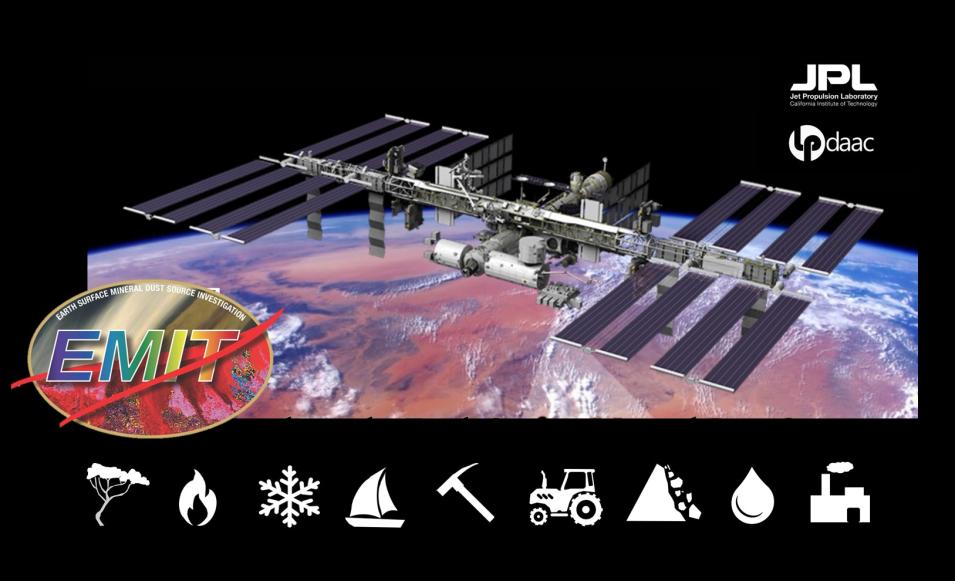NASA's Earth Surface Mineral Dust Source Investigation (EMIT) uses a visible to short-wave infrared (VSWIR) imaging spectrometer on the International Space Station to record light reflected from Earth's surface to measure the surface composition of deserts and arid regions. A primary goal of this mission is to assess the impact of Earth’s mineral dust sources on the heating and cooling of our atmosphere and to predict how future climate scenarios might change the amount and type of mineral dust emitted into Earth’s atmosphere.
Data from the EMIT mission have been used to quantify greenhouse gas emissions from point source emitters and can also be applied to other disciplines for mapping fire, harmful algal blooms, and snow melt. EMIT has a 75-kilometer viewing swath, 285 spectral bands, a 60-meter spatial resolution, and collects data between 52° north and south latitude.
In this webinar, scientists from the EMIT Science Team at NASA's Jet Propulsion Laboratory and NASA’s Land Processes Distributed Active Archive Center (LP DAAC) will introduce you to the EMIT mission and measurements, provide the basics of imaging spectroscopy, show how to discover and access EMIT data, and provide data learning resources for working with these data.
A question-and-answer period will follow the presentation.
